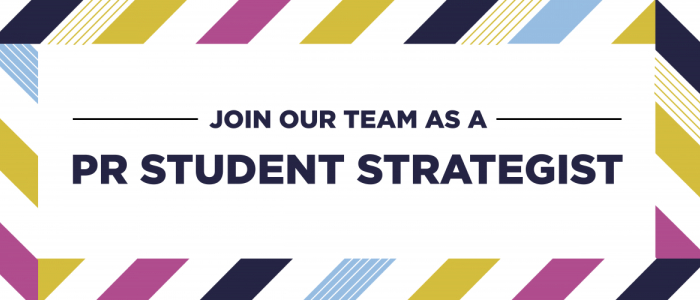
Our top 10 tips for landing your dream internship opportunity
Nov 1, 2023
Written by: Kendall McCarthy, Bella Lee and Olivia Thaler
Internships are a great way to gain experience in your field of interest and find out your preferences in a role, management style and work environment. In today’s competitive job market, having internship experience can now be seen as a requirement for an entry-level position. With so much pressure to find an internship, the process can seem daunting. However, as P&G’s interns, we have navigated the waters and are excited to share our insights. Here’s a little bit about us:
Kendall McCarthy, senior at Texas Christian University:
- Piper & Gold public relations intern (January 2023 to present)
- Statusphere member relations intern (August to December 2022)
- Magnus Opus SEO content marketing intern (August to December 2021)
Bella Lee, senior at Michigan State University:
- Piper & Gold branding and marketing intern (September 2023 to present)
- The Estee Lauder Companies creative intern — Too Faced Cosmetics studio team (May to August 2023)
- MRKT marketing intern (November 2022 to May 2023)
- Aston Carter recruiting intern (May to August 2022)
Olivia Thaler, junior at Michigan State University:
- Piper & Gold communications intern (January 2023 to present)
- The Modern Day Wife PR and events intern (June to December 2022)
We sat down over a (virtual) cup of coffee and reflected on our past experiences to collect our top 10 tips for landing your dream internship. From crafting the perfect resume to acing interviews, we’ve got you covered.
1. Make your school’s career office your first stop.
Your school’s career center is an amazing and often underutilized resource for finding the perfect internship. Sometimes, hiring managers email the career center about an opportunity instead of posting it online, so the professionals who work there will give you access to opportunities that other students don’t have. Some universities have one career center for all majors and some have one for each department. Regardless of the structure, the staff of the center will typically help with resume review, interview prep and more.
2. Create a plan.
Trying to find an internship might seem like a part-time job. To help find as many opportunities as possible, use multiple outlets, including LinkedIn, WayUp and Handshake. Consider going to a career fair if your school or department is hosting one. Make sure to take time each day to respond to messages, apply for a few opportunities or work on cover letters.
3. Create a resume that works and stick with it.
When creating your initial resume, don’t be afraid to ask professors or your school’s career center to review it and give you suggestions. Once you have the best resume possible, you should create a copy and tailor it to each opportunity you apply for by including keywords and only sharing experience that is relevant to that position. Bella, who had an internship at a staffing firm, told us, “When you submit your resume, AI will look for keywords in your resume that correlate to the job description.”
At the bare minimum, you should update your resume twice a year. When you finish a position, make sure that you update the description to accurately reflect what you did, because chances are you did more than what was in the job description. While you’re at it, update it on your LinkedIn profile too.
4. Keep your resume short.
The classic piece of advice is to keep your resume to one page. The average recruiter looks at a resume for 7 seconds, so they don’t have time to read the whole thing anyway. Make sure that you use italics, bold text and bullet points to keep it easy to scan.
Make sure your contact information is accurate and legible. If you misspell your email or phone number, the hiring team is not going to search for the correct one. It’s also helpful to include two to three sentences at the top of your resume to share what your professional goals are and what you’re looking for in general, although this can be omitted if you submit a cover letter.
5. Networking is key.
After you research the company, try to connect with or contact someone within the company through LinkedIn. This could be the hiring manager for the department you’re interested in or someone who has a full-time role that you’d want to learn from. Once they hear from you, they’ll recognize you in the resume pool if they review applicants.
If you are excited about an organization but don’t see any jobs on their website, send a cover letter and your resume to the hiring manager asking if they have any roles open. If they don’t, say thank you and ask them to keep you in mind for the future. You can also ask to set up an informational interview to learn more about the organization and what a specific role entails, which might help determine what you want to do full-time.
6. Use your resume to show what makes you, you.
Chances are, there are dozens of other students applying for the same role you are. Make sure to include something in your resume and portfolio that makes you unique and helps you stand out from the other candidates. Even if you have never had an internship, previous volunteer experience, work experience and extracurricular activities are all beneficial to include if you are able to show how they prepared you for an internship.
“Before I had internship experience, I had my own blog where I would post about fashion and beauty, an industry I’m interested in working in. This is a unique experience that not everyone has on their resume so I made sure to include it in my application,” Olivia said.
7. Take advantage of your cover letter.
Cover letters might seem tedious, especially when you’re applying for multiple similar internships, but writing one is a great opportunity to go beyond your resume. Use it to highlight your most relevant experience and share why you’re specifically interested in that company. This is your chance to show the hiring manager that you did your research. Recruiters can tell if you are copying and pasting the same cover letter, so every cover letter you submit should be different. Your cover letter must communicate you want this job, not just a job.
One tip that Kendall always likes to use is to include wording from the job posting. “Where you might describe your experience one way, finding a way to tie it directly to what they’re asking for in the posting is even better,” she shares. “For example, on my resume, I say I have experience in social media management, but I might phrase it as ‘content creation’ if that’s a responsibility listed in the job description. I also like to find a way to work in the company’s mission or vision statement to show why I want to work at that organization specifically.”
8. Use the STAR method.
We love the STAR method so much at P&G that we use it when interviewing candidates. STAR stands for “situation, task, action, result.” We love the STAR method because it provides structure and keeps you organized while you share your answer to a question.
To use this method, start by explaining the situation you were in for a certain project. Then describe the task you were given or the problem at hand. Share what action you took and what the result was. Congratulations, you’re a STAR! To practice, research questions you may be asked and come up with sample responses in the STAR method.
9. Do your research.
Never be caught by surprise again by the question, “Do you have any questions for us?” When you get an interview invitation, research your interviewer and come up with a list of questions to ask them. It’s not creepy, we promise. It’s impressive to show that you not only know the organization, but you took the time to learn about your interviewer on LinkedIn. Some sample questions include:
- “What drew you to this company?”
- “How would you describe the culture here?”
- “What is your favorite and least favorite part of your job?”
- Ask a question about the company’s mission and vision: “I saw that the company’s mission is [XYZ] and that spoke to me. How do you see this reflected in the culture?”
- If they’ve been in the same industry for a while: “How does [COMPANY NAME] compare to other companies you’ve worked at as far as [SPECIFIC ASPECT]?
- If they’ve been at the company for a while: “What has made you stay at this company for [X amount of time]?”
10. Follow up after the interview with a thank-you email.
Always be sure to send an email after your interview thanking the interviewers for their time. If you interviewed in person or if the office is close to you, consider dropping off a handwritten note. This small gesture will leave a big positive impression and help them remember you as they’re reviewing applications. Here’s an example template to use:
“Dear [INTERVIEWER NAME],
Thank you so much for meeting with me today to discuss the internship positions at [COMPANY NAME]. I loved getting to know you and hearing about [BROAD TOPIC YOU SPOKE ABOUT].
I especially enjoyed hearing about [SPECIFIC TOPIC YOU TALKED ABOUT]. (In the rest of this paragraph, tie the specific topic to one of your career goals and explain why it made an impact on you.)
After speaking with you, I am even more excited about the opportunity to work at [COMPANY NAME]. I am confident that my skills in [LIST A FEW RELEVANT SKILLS] will make me a great fit for the organization.
Thank you again for your time and I look forward to hearing from you soon. Let me know if I can answer anything further.”
In our collective experience, we've learned that showcasing what makes you unique is a powerful strategy. There may be others with more experience than you or who are better at something than you are, but there is only one you. The goal is to find an organization that matches your skills, has a work environment that fits your needs, and is somewhere you will learn and grow. In any internship, it’s important to remember you’re a student. There is always room for improvement, and the most beneficial internships will provide a space for you to experiment and make mistakes. Just remember: each experience, each rejection and each success is a stepping stone toward your dream post-grad role.



